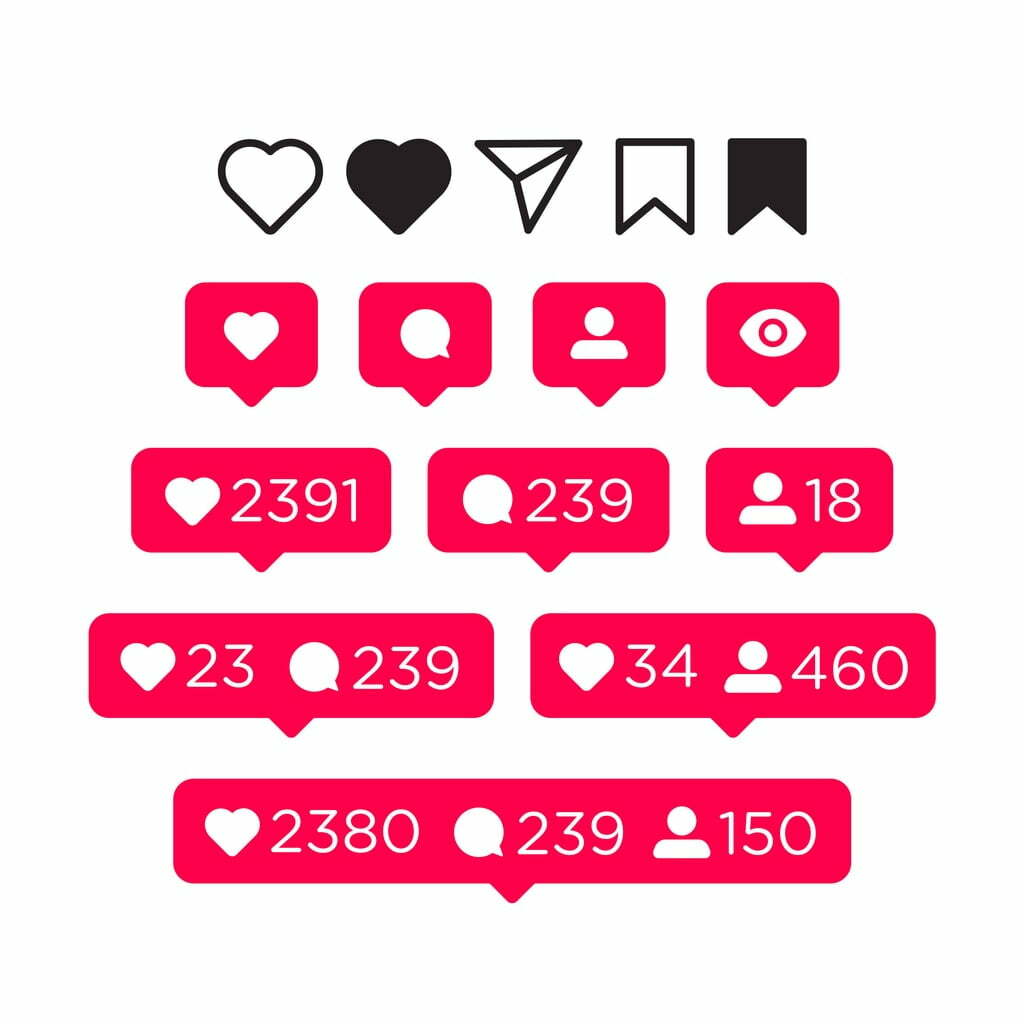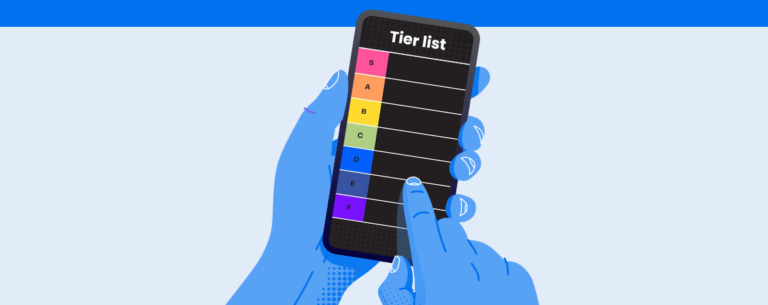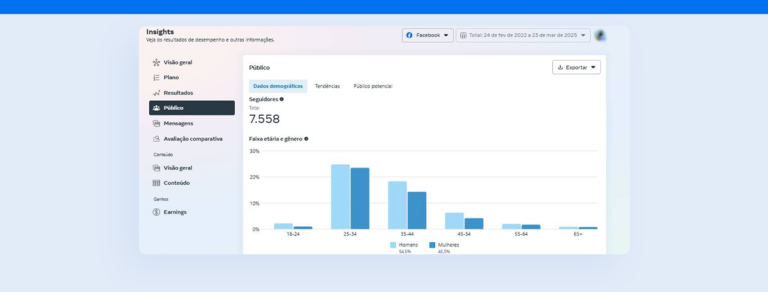How does Instagram’s algorithm work? In this post, we will delve into details already disclosed and others that make sense. We’ll go through the factors that could influence the ranking of your content in your followers’ feed and explain why the algorithm is great for marketers.
How does Instagram’s algorithm work?
Despite not being openly published, from research on sources like Buffer and Social Media Examiner, we’ve come up with seven key factors that determine whether a post will have more organic reach on Instagram. It is important to remember that the account is valid for the current moment, and the situation may change.
We have seven key points that we will present below and broaden the analysis right after (about each point):
- Engagement: Popularity measured in metrics like likes and comments.
- Context / Relevance: The types of content you are interested in and interacted with.
- Connections: The profiles you interact with regularly.
- Time Decline: How recent the posts are.
- Profile searches: The accounts you usually search on Instagram.
- Direct shares: Which posts you share.
- Time Spent: The length of time watching a post.
Let’s understand more about these factors.
1. Engagement = Popularity
According to the Social Media Examiner, when a person or brand posts something on social networks, algorithms typically show the post to an example audience and analyze how the audience reacts to the content. If the reaction is positive to the post, the algorithm will show the post to more people.
This indicates that a more engaging post is more likely to appear in your Instagram feed. The most common types of engagement (which, by the way, are measured by Reportei) are likes, comments, video views, shares (via direct), saving, viewing stories, and watching live videos.
If someone you know interacted with the post, Instagram can also assume that you would be interested in the post and show it to you.
And we have some important information to complement: an Instagram representative told Business Insider that the ranking of posts would not be considered a popularity contest. Less engaging posts that are relevant to you may also appear at the top of your feed.
2. Instagram context = content relevance to you
When the timeline change was announced, Instagram mentioned that it would first show the content that the user would most like.
The order of the photos and videos in your feed would be based on the likelihood of interest in the content, the engagement with the post, and the timing of the post.
But how does Instagram know what’s interesting to you? This information is worth millions (or billions!), But we can deduce some points.
One way could be to look at the types of content (for example, travel, food, fashion, sports, etc.) that you have interacted with in the past. That would depend on recognition and image technology (to categorize content) – something entirely possible today on Instagram.
The algorithm can also look at the hashtags used. If there is a specific type of content that you engage with most often (for example, food), Instagram could rate that content as higher in your feed.
3. Relationships: The accounts the user interacts with
In its second announcement about the news feed, Instagram stated the following:
“And no matter how many accounts you follow, you should see your best friend’s last posts.”
This implies that the content of your “best friends” will likely appear at the top of the feed. Since Facebook, Whatsapp, and Instagram are one company, it would not be impossible for the 3 data to be related to determine a user’s relationships: family, friends, co-workers, etc.
Another interesting point is what Thomas Dimson, a software engineer at Instagram said could be used to understand how close users are:
- People whose content you like
- People who receive a direct message
- People the user is looking for
- People you know in real life (photo tagging)
While these may not be the exact criteria used in the Instagram’s algorithm, they do give us a hint as to what Instagram probably considers.
4. Time Decline: How Recent Posts Are
One of the critical points of Instagram: the timing of the posts. The tool itself was created around the idea that the “moment,” the instant, matters.
Instagram wants to show you new posts.
Something from last week may not interest you as much as something from an hour ago. So probably Instagram will display newer posts – even if older posts meet other criteria.
That is, the moment you post is still relevant!
Based on a personal analysis (no proof yet), Instagram calculates “new posts” in the interval between your last login and your current login.
For example, I opened Instagram at 11 pm the day before and again today at 9 am. Fifty posts were created on my timeline during this period. The algorithm would only analyze these 50 posts to decide which ones will appear first to you. (If your personal experience is different, do not hesitate to comment, after all this is not a rule that Instagram discloses).
This could mean that the best time to post is when your followers are most active – as there would be less competition between posts. (for example between 9 am, and 10 am in the drawing below)
5. Profile Search: The Accounts You Check Frequently
An Instagram member told Business Insider that fetched profiles are a signal to rank posts in the feed. When you (regularly) search for individual patterns, this probably indicates that you are interested in seeing more about that account and may not have seen it in the feed.
Instagram can then rank higher the posts you searched for, so you don’t have to search, improving the user experience.
Thomas Dimson of Instagram also mentioned in his speech that when they launched the new algorithm, the number of searches dropped. They looked at this as a good sign because it means that people are seeing the messages of who they are interested in without having to search for it.
6. Shares: posts you share
Instagram has made it very easy for users to share a post they see on the timeline. According to a Business Insider article, these shares also serve as the basis for the algorithm to understand your interests.
2 points indicate this:
- Sharing a post shows that you are probably interested in posts of a particular profile. The Instagram’s algorithm can then consider this when classifying posts in your feed.
- When you share a post, you send it to someone directly. It also indicates that you have a degree of relationship with the person.
7. Time invested: Time spent looking at a post
Facebook found that if “people spend significantly more time on a particular story in the News Feed than most other stories, that’s a good sign that content is relevant to them,” even if the content isn’t liked or commented. Facebook itself assumed that:
‘Based on the fact that you don’t ignore the post and spend more time looking at the screen, it is understood that more posts like this can be shown to you.’
If this factor is included in the Instagram algorithm, the more time you “spend” on an Instagram post, the more likely you are to receive similar content.
While there is no confirmation on this factor, it would not be surprising if Instagram already used the same technique as Facebook.
8. Other likely signs
There are a lot of different symptoms that aren’t confirmed by Instagram but could be used – and it’s good to be aware of them. Facebook uses an algorithm with hundreds of variables, and it wouldn’t be uncommon for Instagram to do the same. Some things listed by the blog Makelight about the algorithm
- How regularly do you open the app
- How daily do you post
- How many likes received a picture
- If the post is a video
- If an image is of a company account versus a personal account
- How active was the job today: comments and likes received in the last moments
Why is the new algorithm great for marketing?
As the number of users on Instagram increases, so do the posts on the timeline. People follow more people, and the number of posts they receive grows.
So it’s only natural for post views to fall – since users have limited time on Instagram. The reality is that people usually don’t see all the new posts when they log in. A study by the social network shows that, on average, users lose 70% of jobs.
Theoretically, this makes room for those who produce exciting and relevant content. That is, if you have good marketing, this may favor you. You get the most compelling content and not the latest.
Looking at it from another angle, without the algorithm, a quick way to get the attention of your Instagram followers would be to post many times a day. If most brands follow this strategy, the number of Instagram posts will increase dramatically, and the organic reach of each post would fall proportionally – even if it were a quality post.
With the algorithm, brands are encouraged to publish only their best content, and the quality of their content will determine their outcome.
Bonus:
The Explore tab of Instagram also uses an algorithm based on user interests and past behaviors. It’s another way for your content to reach more people!





